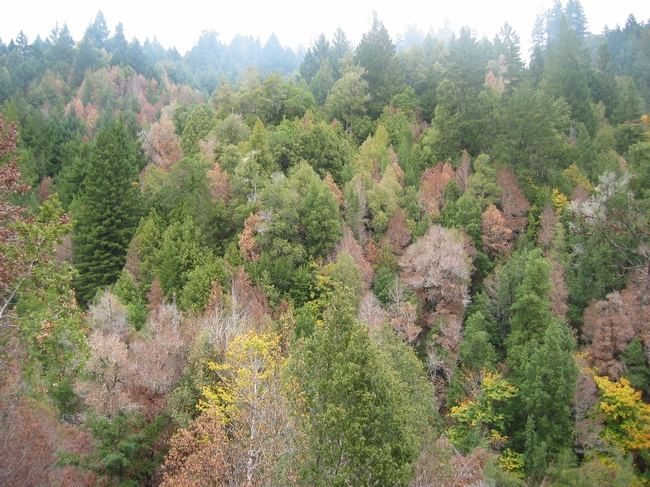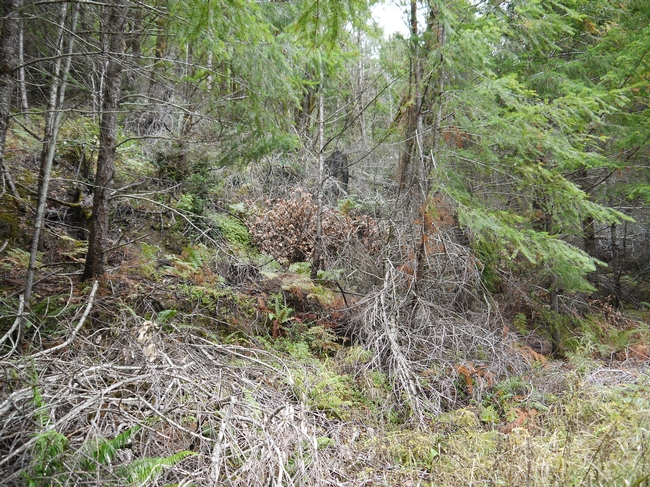
Research by UC Cooperative Extension staff in Humboldt County shows that infection and oak mortality are only the beginning of the story, as the disease may increase forest fuels and put infested stands at higher risk of severe wildfire.
UC Cooperative Extension forest advisor Yana Valachovic, with assistance from Humboldt State University’s Forestry Department and CAL FIRE, found that in Douglas-fir-tanoak forests where high hardwood mortality is related to SOD, fuels can build up to hazardous levels on the forest floor over time. Their research documented fuels buildups in infected areas that could increase a wildfire’s flame length by 3 to 4 feet and double a wildfire’s rate of spread, depending on how much time has elapsed since initial infection.

Likewise, the increased fuels on the forest floor can take a long time to break down, posing a long-term fire hazard and additional risks to firefighters.
“The disease creates a hazardous fuels situation that is passed on to firefighters during wildfire," says Valachovic. "They must combat blazing downed trees, patches of increased winds and fire behavior, and other physical and logistical obstacles.”
Hugh Scanlon, chief of CAL FIRE's Alder Conservation Camp, helped co-author the recent paper with Valachovic and others.
"In many cases, modeled wildfire conditions in sudden oak death affected forests exceed safety thresholds for handcrews, calling for changing suppression tactics and strategies," Scanlon says. "This can mean more heavy equipment, aircraft use, indirect lines and more area burned with higher intensity.”
Sudden oak death is still a relatively new disease in California, and the long-term ecological consequences of SOD infection and spread are largely unknown. However, this research shows that fuels are one of the major issues associated with the disease, and will require increased attention and management in coming years. For more information about this study, see the full paper, which was published in the journal Forest Ecology and Management (http://www.sciencedirect.com/science/article/pii/S0378112711001228.
To see a map showing the locations of sudden oak death in California, go to http://www.oakmapper.org/. At the website, you can also download the Oakmapper iPhone app to help UC scientists monitor the disease by reporting suspected cases of sudden oak death.
Contact - Assistant Director, News and Information Outreach